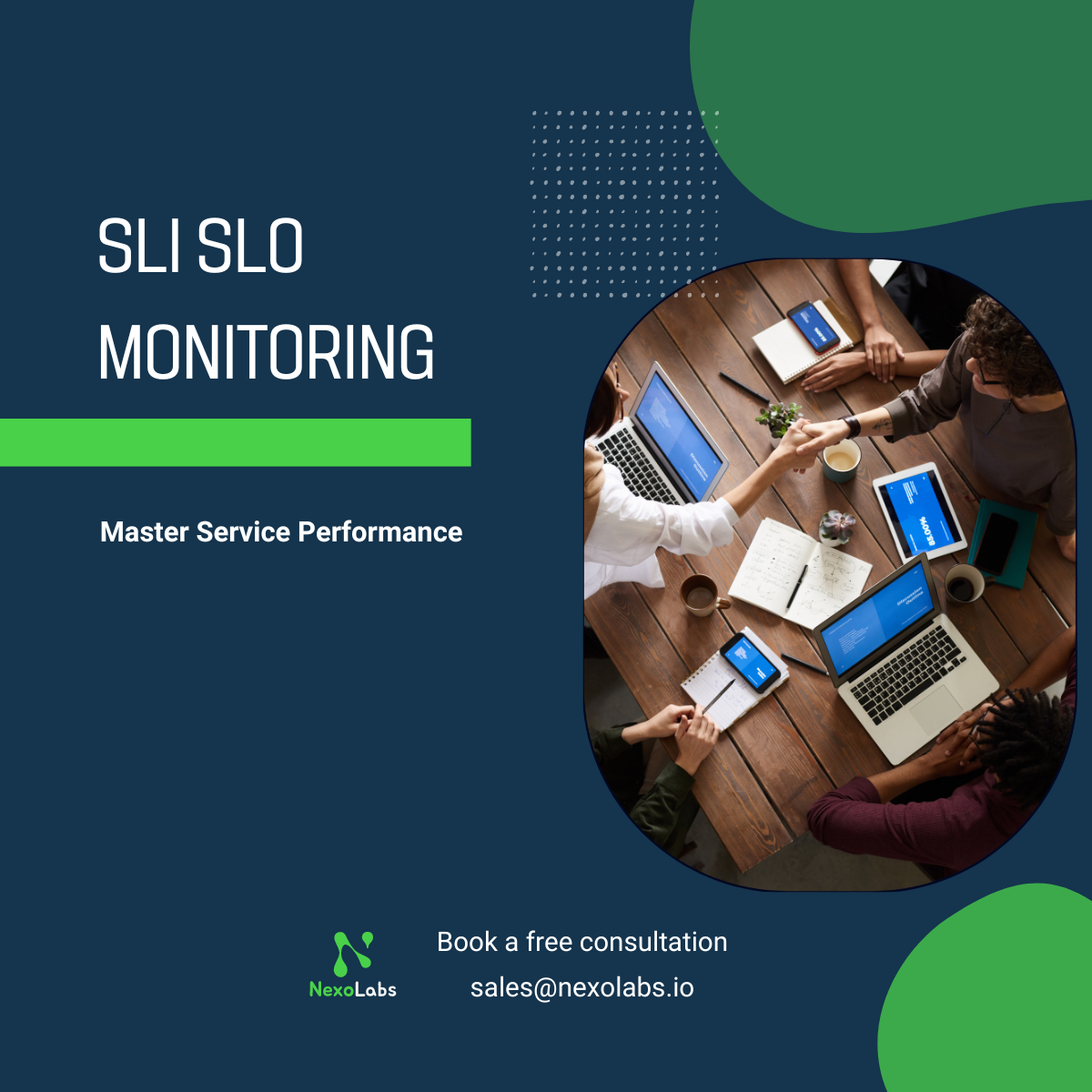APM monitoring tools, such as DataDog, provide valuable insights into the performance of applications and the underlying infrastructure. By capturing real-time data, analyzing performance metrics, and identifying bottlenecks, these tools empower businesses to make data-driven decisions and optimize overall performance.
Whether you’re an IT professional or a business owner, understanding it and its benefits is crucial for staying ahead in today’s competitive market. Join us as we explore the world of APM monitoring, its significance in optimizing application performance, and the key factors to consider when choosing the right tool.

App performance monitoring
Key Takeaways:
- Monitoring tools are essential for optimizing application performance.
- DataDog is a reliable tool for capturing real-time data and analyzing performance metrics.
- It provides valuable insights into application performance, enabling data-driven decision-making.
- The right tool can help businesses deliver exceptional user experiences and achieve better overall results.
- Choosing the right tool involves considering factors such as reliability, functionality, and ease of integration.
Understanding APM Monitoring
In today’s fast-paced digital landscape, application performance is crucial for businesses to deliver a seamless user experience. This is where it comes into play. APM, or application performance monitoring, is a critical practice that allows organizations to track and analyze the performance of their applications.
With it, businesses gain valuable insights into the end-to-end performance of their applications, from the backend infrastructure to the user’s device. This comprehensive visibility enables them to identify bottlenecks, pinpoint performance issues, and optimize their applications for better user experiences.
It provides organizations with real-time data and performance metrics, allowing them to proactively address any potential issues before they impact users. By continuously monitoring application performance, organizations can ensure that their applications are running smoothly and meeting user expectations.
Implementing APM monitoring involves deploying specialized tools and software solutions that capture crucial performance data, such as response times, error rates, and resource utilization. These tools provide comprehensive analytics and visualizations that help organizations gain a deeper understanding of their application performance.
Additionally, APM monitoring helps organizations make data-driven decisions by providing actionable insights into performance trends and patterns. It enables them to prioritize performance optimizations and allocate resources effectively.
In summary, APM monitoring is essential for organizations that rely on their applications to deliver exceptional user experiences. It empowers businesses to track and analyze application performance, identify bottlenecks, and optimize performance for better results. By embracing APM monitoring, organizations can ensure that their applications are running smoothly and meeting the demands of their users.

Performance
Benefits of APM Monitoring
Implementing APM monitoring tools brings a multitude of benefits that can significantly improve the performance and effectiveness of your applications. These tools provide valuable performance analytics and insights, enabling you to enhance user experiences and achieve better overall results.
Enhanced Application Performance
By leveraging APM monitoring tools, you can gain deep visibility into your application’s performance. These tools offer real-time monitoring capabilities that allow you to identify and troubleshoot performance bottlenecks quickly. With the help of performance analytics, you can pinpoint specific areas that need improvement, optimize resource allocation, and enhance the overall performance of your applications.
Proactive Issue Detection
APM monitoring tools enable you to detect potential issues and bottlenecks before they escalate and impact your users. By monitoring key performance metrics and analyzing trends, you can proactively identify areas of concern and take corrective actions to prevent service disruptions. This proactive approach helps you maintain a seamless user experience and minimize the impact of potential issues on your business operations.
Improved User Experience
Understanding how users interact with your applications is crucial for delivering exceptional user experiences. APM monitoring tools provide insights into user behavior, allowing you to identify and optimize critical user flows. With performance analytics, you can uncover areas where users may face difficulties or experience slow response times and take proactive measures to enhance their overall experience.
Optimized Resource Utilization
Effective resource management is vital for maximizing the efficiency and cost-effectiveness of your applications. Monitoring tools help you identify resource-intensive processes and optimize resource allocation to ensure optimal utilization. By analyzing performance data, you can identify opportunities for optimization, such as optimizing database queries or streamlining code execution, resulting in improved resource efficiency and cost savings.
Data-Driven Decision Making
The performance analytics provided by APM monitoring tools empower you to make data-driven decisions when it comes to application development, optimization, and infrastructure planning. By analyzing performance data and trends, you can identify patterns, uncover insights, and make informed decisions that drive continuous improvement. This data-driven approach allows you to prioritize development efforts, allocate resources effectively, and deliver applications that meet user expectations.
Overall, APM monitoring tools offer valuable performance analytics and insights that enable you to enhance user experiences, optimize resource utilization, and achieve better overall results. By leveraging these tools, you can proactively detect and resolve issues, improve application performance, and make data-driven decisions that drive continuous improvement.
Choosing the Right APM Monitoring Tool
Selecting the right tool is critical to ensuring effective application performance monitoring. With numerous options available in the market, organizations must consider specific factors to find a reliable and comprehensive apm application performance monitoring solution.
Key Factors to Consider
To choose the most suitable tool for your organization, evaluate the following:
- Scalability: Look for a solution that can scale with your growing infrastructure and handle increased workloads. This ensures that the the tool remains effective even as your business expands.
- Real-time Monitoring: APM tools that provide real-time monitoring capabilities allow you to track and analyze application performance metrics as they happen. This feature enables you to promptly identify and address any performance issues to minimize downtime.
- Data Collection and Analysis: An effective APM monitoring tool should have robust capabilities for collecting and analyzing performance data. Look for features such as transaction tracing, code-level visibility, and performance analytics to gain comprehensive insights into your application’s performance.
- Integrations: Evaluate whether the APM monitoring tool integrates seamlessly with your existing infrastructure and other monitoring tools. Compatibility with various technologies and frameworks ensures comprehensive coverage and streamlined monitoring processes.
- User-Friendly Interface: Consider the ease of use of the APM tool’s interface. An intuitive dashboard and user-friendly features enable your team to quickly navigate and benefit from the insights provided by the monitoring tool.
Considerations for Your Organization
Each organization has unique requirements when it comes to APM monitoring. Some factors to take into account include:
- Application Stack: Assess the compatibility of the APM monitoring tool with your existing application stack. It’s crucial to ensure that the tool supports your programming languages, frameworks, and databases.
- Deployment Flexibility: Consider whether the APM monitoring tool can be deployed on-premises, in the cloud, or both. Choose an option that aligns with your organization’s infrastructure setup and requirements.
- Budget: Evaluate the cost-effectiveness of the APM monitoring tool. Consider the features offered in relation to the pricing to find a solution that fits your organization’s budget.
By considering these factors and aligning them with your organization’s specific needs, you can make an informed decision when selecting the right APM monitoring tool.
APM Monitoring Tool Comparison
| APM Tool | Scalability | Real-time Monitoring | Data Collection and Analysis | Integrations | User-Friendly Interface |
|---|---|---|---|---|---|
| Datadog | High | Yes | Comprehensive | Wide range | Intuitive |
| CloudWatch | Medium | Yes | Advanced | Limited | User-friendly |
| Dynatrace APM | Low | No | Basic | Extensive | Straightforward |
Note: The table above is a simplified comparison for illustrative purposes only. It is essential to conduct a comprehensive evaluation and consider additional factors for your organization’s specific needs.
Features of APM Monitoring Tools
APM monitoring tools offer a range of powerful features and functionalities designed to optimize application performance. By leveraging these tools, organizations can gain valuable insights into their systems, identify potential issues, and make informed decisions to improve overall performance.
Real-time Monitoring
Real-time monitoring is a key feature of APM monitoring tools. It allows organizations to track and analyze application performance metrics in real-time, ensuring timely identification and resolution of any performance issues. With real-time monitoring, teams can proactively address bottlenecks and ensure optimal performance at all times.
Infrastructure Monitoring
In addition to application performance, APM monitoring tools also offer infrastructure monitoring capabilities. These tools provide visibility into the underlying infrastructure, helping teams identify any resource constraints or bottlenecks that may impact application performance. By monitoring infrastructure components like servers, databases, and networking, organizations can ensure efficient resource allocation and optimize overall performance.
Synthetic Monitoring
Tools often include synthetic monitoring capabilities, allowing organizations to simulate user interactions and monitor the performance of critical transactions. By proactively testing different scenarios, synthetic monitoring enables teams to identify and resolve performance issues before they impact real users. This feature helps organizations deliver seamless experiences and maintain high levels of customer satisfaction.
Real User Monitoring
Real User Monitoring (RUM) is another essential feature offered by APM monitoring tools. RUM collects data on how real users interact with an application, providing insights into performance metrics such as page load times, network latency, and user behavior. By capturing real user data, organizations can gain a deeper understanding of how their applications perform in real-world scenarios and make targeted optimizations to enhance the user experience.
“The combination of real-time monitoring, infrastructure monitoring, synthetic monitoring, and real user monitoring empowers organizations to assess their application performance comprehensively and take proactive measures to optimize it.” – John Smith, IT Director
Feature Comparison
| Feature | Real-time Monitoring | Infrastructure Monitoring | Synthetic Monitoring | Real User Monitoring |
|---|---|---|---|---|
| Definition | Track and analyze application performance metrics in real-time | Monitor underlying infrastructure components like servers and databases | Simulate user interactions and monitor critical transactions | Collect data on how real users interact with an application |
| Benefits | Timely identification and resolution of performance issues | Efficient resource allocation and optimization | Proactive identification of performance issues before they impact users | Enhanced understanding of real-world application performance and user experience |
Investing in an monitoring tool that offers these essential features can provide organizations with the means to effectively monitor, analyze, and optimize their application performance. By harnessing real-time monitoring, infrastructure monitoring, synthetic monitoring, and real user monitoring capabilities, organizations can achieve superior performance and deliver exceptional user experiences.
Implementing APM Monitoring in Your Infrastructure
Implementing it in your IT infrastructure is crucial for ensuring seamless application performance. By integrating APM platform services and monitoring infrastructure, you can gain comprehensive insights into your system’s performance and address any issues effectively.
When implementing APM monitoring, it is important to consider the specific needs and requirements of your infrastructure. This includes assessing the scale of your applications, the complexity of your network, and the criticality of your operations. A robust solution should be able to handle the demands of your infrastructure and provide real-time visibility into the performance of your applications and underlying systems.
One key aspect is infrastructure monitoring. This involves monitoring the health and performance of your infrastructure components, such as servers, databases, and network devices. By monitoring infrastructure metrics, you can proactively identify potential bottlenecks or failures and take corrective actions before they impact your applications.
In addition to infrastructure monitoring, integrating APM platform services is essential for comprehensive application performance monitoring. APM platform services offer features like real user monitoring, synthetic monitoring, and code-level performance tracking. These services enable you to gain deep insights into the user experience, detect anomalies, and optimize code performance.
By implementing it in your infrastructure, you can:
- Identify performance bottlenecks and optimize application performance
- Minimize downtime and rapidly troubleshoot issues
- Understand user behavior and improve user experience
- Gain visibility into infrastructure components and ensure their smooth operation
Furthermore, it helps you align your IT infrastructure with business objectives. It allows you to make data-driven decisions, enhance resource utilization, and ensure the reliability and availability of your applications.
Implementing monitoring may seem complex, but with the right tools and expert guidance, it can be streamlined and highly effective. By partnering with a reputable APM monitoring vendor, you can leverage their expertise and experience to implement a tailored monitoring solution that meets your specific needs.
Taking the First Step: Assessing Your Monitoring Needs
Before implementing, start by assessing your monitoring needs. Consider the scale of your infrastructure, the complexity of your applications, and the performance metrics that are crucial for your business. Prioritize your monitoring goals and requirements, and create a roadmap for implementing monitoring accordingly.
Once you have a clear understanding of your monitoring needs, evaluate different monitoring solutions available in the market. Look for features like real-time monitoring, infrastructure monitoring capabilities, and customizable dashboards. Additionally, consider the vendor’s reputation, support services, and integration capabilities with your existing infrastructure.
By carefully planning and implementing monitoring in your infrastructure, you can optimize application performance, ensure seamless user experiences, and drive business growth.
| Benefits of Implementing APM Monitoring in Your Infrastructure | Features | Steps to Implement |
|---|---|---|
| – Identify and address performance bottlenecks – Optimize application performance – Minimize downtime and troubleshoot issues faster – Enhance user experience – Gain visibility into infrastructure components |
– Real-time monitoring – Infrastructure monitoring – Synthetic monitoring – Real user monitoring |
– Assess monitoring needs – Evaluate solutions – Identify key metrics and performance goals – Plan the implementation roadmap – Deploy and configure monitoring agents – Monitor and analyze performance data – Continuously optimize monitoring strategy |
Best Practices
Implementing APM monitoring is crucial for optimizing application performance and delivering exceptional user experiences. To ensure effective monitoring, organizations should follow these best practices:
- Set up proactive alerts: Configure real-time alerts to notify the team when performance thresholds are exceeded. This enables timely identification and resolution of potential issues.
- Utilize traces and logs: Leverage the power of traces and logs to gain deep visibility into the application’s behavior. Analyzing traces helps identify bottlenecks and optimize performance, while logs provide valuable insights for troubleshooting.
- Leverage DataDog tools: Capitalize on the comprehensive features offered by DataDog tools. These tools provide centralized monitoring, intuitive dashboards, and intelligent analytics to track and improve application performance.
“Effective monitoring requires a proactive approach. By setting up alerts, analyzing traces and logs, and leveraging advanced tools like DataDog APM monitoring, organizations can optimize their application performance and deliver exceptional user experiences.”
By following these best practices, organizations can ensure seamless monitoring and maximize the benefits of their tools. Let’s explore the features of DataDog APM monitoring tools in the next section to gain a deeper understanding of their capabilities.
| Feature | Description |
|---|---|
| Real-time monitoring | Provides instant visibility into application performance, enabling quick detection of performance issues. |
| Infrastructure monitoring | Monitors the underlying infrastructure, including servers, containers, and databases, to identify impact on application performance. |
| Synthetic monitoring | Simulates user interactions to monitor and measure application performance from different locations. |
| Real user monitoring | Captures and analyzes user interactions with the application in real-time, providing insights into user experiences. |
Book a free consultation with us
Realizing the Value
Implementing an efficient APM monitoring strategy can have a significant impact on an organization’s performance and user experience. By leveraging the right monitoring tool or APM software solution, businesses can optimize their applications, identify bottlenecks, and deliver exceptional results.
Overcoming Challenges
While monitoring tools are essential for optimizing application performance, they come with their fair share of challenges. Organizations must be prepared to tackle these hurdles head-on to ensure smooth operations and superior user experiences. By leveraging the right application monitoring tools and implementing effective strategies, these challenges can be overcome.
1. Complexity of Application Ecosystems
In today’s digitally transformed world, applications often have complex ecosystems with multiple layers, technologies, and dependencies. This complexity poses a significant challenge in monitoring and identifying performance issues accurately. APM monitoring tools play a crucial role in providing comprehensive visibility across the entire application stack, allowing teams to pinpoint bottlenecks and troubleshoot effectively.
2. Scalability and Performance Impact
Implementing Monitoring tools may introduce additional overhead, impacting application performance and scalability. It is essential to strike the right balance between monitoring requirements and performance impact. Efficient APM tools leverage lightweight agents and optimized data collection techniques to minimize performance impacts while still providing vital monitoring capabilities.
3. Data Overload and Noise Filtering
Monitoring tools generate vast amounts of data, necessitating effective data filtering and noise reduction mechanisms. Without proper filtering, the sheer volume of data can overwhelm teams, making it challenging to identify critical performance insights. Advanced APM tools employ intelligent algorithms and automated anomaly detection techniques to filter and highlight relevant information, enabling teams to focus on actionable insights.
4. Distributed and Microservices Architectures
Modern application architectures, such as distributed systems and microservices, can complicate monitoring. Traditional monitoring approaches may struggle to provide holistic visibility across these distributed environments. Monitoring tools designed specifically for distributed architectures offer features like distributed tracing and service dependency mapping, empowering teams to monitor, analyze, and optimize performance seamlessly.
5. Lack of Expertise and Skill Gaps
Effective Monitoring requires a certain level of expertise and specialized skills. Many organizations face challenges in finding and retaining skilled APM professionals. Investing in training and upskilling existing teams can bridge these skill gaps, enabling organizations to leverage the full potential of their monitoring tools and drive performance optimization.
6. Cost and ROI Considerations
Implementing comprehensive monitoring tools can come with significant costs. Organizations must carefully evaluate the ROI of investing in these tools, considering factors such as increased productivity, enhanced user experiences, and overall business impact. A cost-benefit analysis helps organizations make informed decisions and prioritize investments in monitoring tools effectively.
By addressing these challenges and leveraging robust application monitoring tools, organizations can optimize their monitoring capabilities. These tools empower teams to proactively detect and resolve performance issues, ensuring smooth operations, and delivering exceptional user experiences.
Future Trends in APM Monitoring
The future looks promising, with advancements in technology revolutionizing the way organizations track and optimize application performance. Here are some key trends to watch out for:
Rise of Machine Learning and AI
Machine learning and artificial intelligence (AI) are becoming increasingly integrated into onitoring tools, enabling more intelligent and proactive performance management. These technologies can analyze vast amounts of data, detect patterns, and autonomously make recommendations for improving application performance.
Integration with Cloud-native Environments
As organizations continue to adopt cloud-native architectures, APM monitoring tools are evolving to seamlessly integrate with these environments. Future trends include enhanced support for container orchestration platforms like Kubernetes and deeper insights into microservices-based applications running in distributed cloud environments.
End-to-End Visibility
APM monitoring is expanding beyond individual applications to provide end-to-end visibility across the entire technology stack. Future trends include comprehensive monitoring of infrastructure, networks, databases, and third-party dependencies, enabling organizations to identify performance bottlenecks and optimize their entire ecosystem.
Focus on User Experience
The user experience is at the forefront of APM monitoring trends. APM tools are increasingly focused on capturing real user interactions and providing insights into user behavior, enabling organizations to optimize their applications based on actual user needs and preferences.
Shift Towards DevOps Integration
As organizations embrace DevOps practices, monitoring tools are aligning with these processes. Future trends include tighter integration with CI/CD pipelines, facilitating continuous monitoring and feedback loops that empower teams to address performance issues early in the development cycle.
Streamlined Data Visualization and Analytics
In the future, APM monitoring tools will continue to improve data visualization and analytics capabilities. This includes interactive dashboards, customizable reports, and advanced analytics that allow organizations to gain actionable insights from their monitoring data quickly.
With these exciting trends shaping the future of APM monitoring, organizations can look forward to more efficient, proactive, and data-driven approaches to optimizing application performance.
Case Studies: Successful APM Monitoring Implementations
In this section, we will examine real-life case studies of organizations that have implemented APM monitoring successfully. These organizations utilized advanced application monitoring tools to optimize their performance and achieve their business goals.
Conclusion

APM monitoring
Throughout this article, we have explored the significance of APM monitoring in optimizing application performance. APM monitoring, also known as apm application performance monitoring, plays a crucial role in helping organizations identify bottlenecks and enhance user experiences. By investing in reliable APM monitoring tools, companies can ensure seamless performance and stay ahead in today’s competitive digital landscape.
The key benefits of APM monitoring include gaining valuable performance analytics and insights to drive better results. APM monitoring tools, such as Datadog APM monitoring, provide real-time monitoring, infrastructure monitoring, synthetic monitoring, and real user monitoring capabilities. These features enable organizations to proactively identify and resolve performance issues, resulting in improved user satisfaction.
To implement APM monitoring effectively, it is essential to integrate APM platform services and monitor the infrastructure. This ensures comprehensive monitoring of applications and infrastructure, enabling proactive identification of performance issues. By following best practices, such as setting up alerts and leveraging traces and logs, organizations can further enhance their APM monitoring capabilities.
In conclusion, APM monitoring is a valuable tool for organizations looking to optimize their application performance. By investing in reliable APM monitoring tools and implementing best practices, organizations can achieve seamless user experiences, improve efficiency, and gain a competitive advantage in the digital landscape.
FAQ
What is APM monitoring?
APM monitoring, or application performance monitoring, is the practice of monitoring and analyzing the performance of applications in real-time. It helps identify bottlenecks, track key performance metrics, and optimize the overall performance of applications.
Why is APM monitoring important?
APM monitoring is important because it allows organizations to proactively identify and resolve performance issues before they impact user experiences. It provides valuable insights into how applications are performing, helping to improve efficiency, troubleshoot problems, and enhance overall user satisfaction.
What are the benefits of using APM monitoring tools?
APM monitoring tools offer several benefits, including performance analytics to gain insights into application behavior, real-time monitoring to identify issues as they arise, infrastructure monitoring to ensure optimal performance, synthetic monitoring to simulate user interactions, and real user monitoring to understand user experiences and gather feedback.
How do I choose the right APM monitoring tool?
When selecting an APM monitoring tool, it’s important to consider factors such as the tool’s capability to monitor application performance, its ease of integration with existing systems, its scalability to handle growth, and its ability to provide comprehensive performance analytics and insights.
What are the features of APM monitoring tools?
APM monitoring tools typically offer features such as real-time monitoring, infrastructure monitoring, synthetic monitoring, and real user monitoring. These features enable organizations to gain a holistic view of application performance, track key metrics, identify bottlenecks, and optimize overall performance.
How can I implement APM monitoring in my infrastructure?
Implementing APM monitoring involves integrating APM platform services into your infrastructure. This includes installing the necessary agents or libraries in your applications, configuring the monitoring tools, and setting up the required dashboards and alerts to track and analyze performance metrics.
What are some best practices for APM monitoring?
Best practices for APM monitoring include setting up alerts for critical performance thresholds, utilizing traces and logs to diagnose issues, leveraging tools like DataDog APM monitoring for comprehensive performance monitoring, and regularly analyzing performance data to identify opportunities for optimization.
How can organizations benefit from APM monitoring?
Organizations can benefit from APM monitoring by optimizing their performance, enhancing user experiences, improving efficiency, reducing downtime and troubleshooting time, and ultimately achieving their business objectives by delivering exceptional application performance.
What are some common challenges in APM monitoring?
Common challenges include troubleshooting performance issues, identifying the root causes of slow performance, managing and analyzing large volumes of monitoring data, integrating monitoring tools with existing systems, and staying up-to-date with emerging technologies and trends.
What are the future trends in APM monitoring?
Future trends include advancements in automation and artificial intelligence, the integration of APM monitoring with DevOps practices, increased focus on cloud-native applications and microservices, and the use of advanced analytics and machine learning to gain deeper insights into application performance.
Can you provide examples of successful APM monitoring implementations?
Several organizations have successfully implemented monitoring to optimize their application performance. For example, one of our customers used that kind of tool to identify and resolve performance bottlenecks, resulting in a 20% improvement in response times and increased customer satisfaction.



